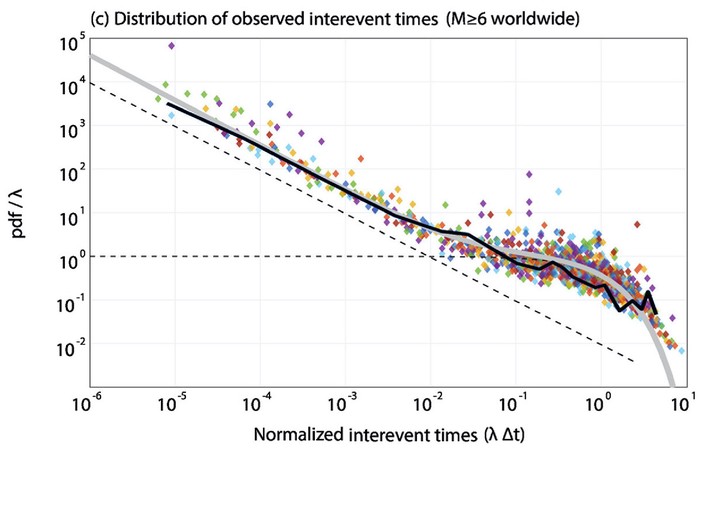Fault mechanics and earthquake cycles
 On sufficiently large faults, simulated sequences exhibit a power-law distribution in interevent times, similar to observed catalogs. From Cattania, 2019, Complex Earthquake Sequences On Simple Faults
On sufficiently large faults, simulated sequences exhibit a power-law distribution in interevent times, similar to observed catalogs. From Cattania, 2019, Complex Earthquake Sequences On Simple Faults
While some seismic sources rupture in characteristic, quasi-periodic earthquakes, most faults produce a more irregular pattern, with temporal clustering and a power-law distribution of rupture lengths. Why do we see such different behaviors?
We’ve been addressing this question from the prospective of fracture mechanics, connecting fault physics at a microscopic scale with the timing and extent of earthquake ruptures. Energy balance criteria predict that the timing and size of seismic events is controlled by the dimension of a fault relative to a characteristic length arising from frictional and elastic properties; for sufficiently large faults, this leads to power-law distributions commonly observed in earthquake catalogs. On the other hand, small faults can rupture in simple, quasi-periodic sequences of identical events. We have depeloped theoretical arguments predicting the recurrence intervals and its scaling with magnitude, in agreement with observations of small repeating earthquakes worldwide.
Until now, we have considered a rather idealized fault geometry and spatial distribution of frictional properties. Current and future work explores more complex and realistic cases, with applications to subduction zone cyles.